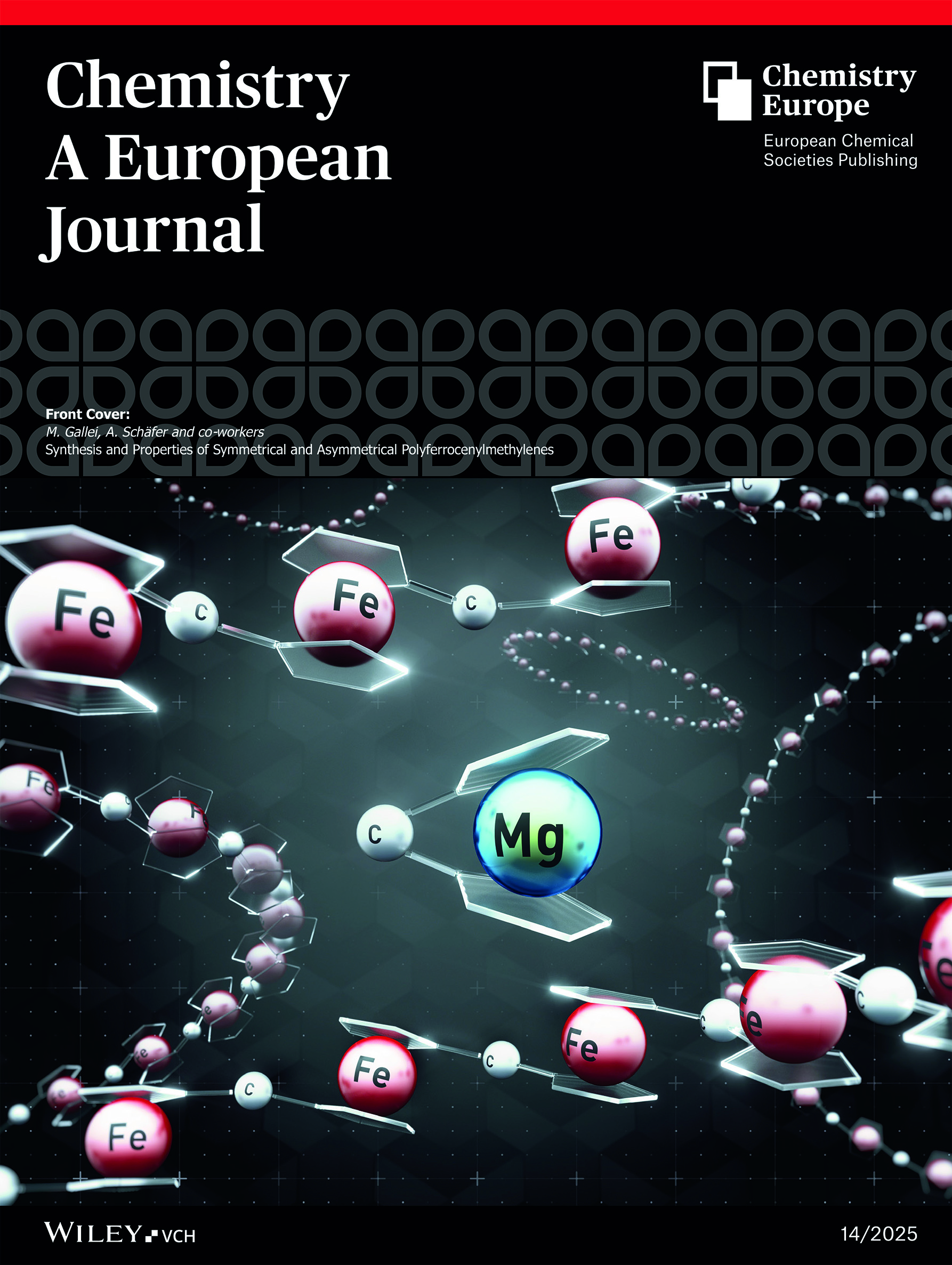Research

The Schäfer group is interested in molecular organometallic chemistry of the main group elements with an emphasis on cyclopentadienyl compounds like metallocenes, metallocenophanes and half-sandwich complexes.
In particular, the focus lies on coordination chemistry of these compounds, as well as their application in homogeneous catalysis and the preparation of new metal-containing polymers.









Cyclopentadienyl Complexes of Main-Group Elements
While group 14 metallocenes (tetrelocenes) have been known for several decades, their coordination chemistry and the related metallocenophanes (tetrelocenophanes) are only poorly explored.
Among other things, our group was able to structurally characterize the first carbene complexes of tetrelocenes, obtain phosphanyl-functionalized Lewis-amphiphilic derivatives, as well as related N-heterocyclic half-sandwich tetrylenes. Furtheremore, the first heterobimetallic dimetallocene was isolated and characterized (Chemistry World; ChemistryViews; CHEMEUROPE; Scinexx; Phys.org).
selected publications:
A lithium–aluminium heterobimetallic dimetallocene (News & Views)
Heavier N-heterocyclic half-sandwich tetrylenes
Main-Group Metallocenophanes
Carbene Complexes of Stannocenes
Diphosphanylmetallocenes of Main-Group Elements

s-Block Catalysis
Metal catalysis has always played a pivotal role in chemistry, both at laboratory scale as well as in industry. One of the biggest challenges in this area is finding viable substitutes for expensive and sometimes toxic transition metals, which are cheaper and possess a high biocompatibility. In this regard, s-block metals, such as magnesium, are of particular interest.
Our group develops new catalysts for a variety of different applications, such as dehydrocoupling and hydroelementation reactions.
selected publications:
Constrained Geometry ansa-Half-Sandwich Complexes of Magnesium – Versatile s-Block Catalysts
Cross-Dehydrocoupling of Amines and Silanes Catalyzed by Magnesocenophanes
Magnesocenophane Catalyzed Amine Borane Dehydrocoupling
Metallopolymers are an important class of compounds at the frontier between organometallic and materials chemistry. Due to the metal centers incorporated in the polymer, the material can possess stimuli-responsive characteristics and promissess a variety of different applications. Within this group, the class of metallocene-based polymers play an especially important role. In particular, ferrocene groups exhibit good chemical and thermal stability and at the same time possess redox active properties.
Amoung other things, our group investigates the relatively unknown polyferrocenylmethylene (PFM), a polymer with ferrocene units in the main-chain, which are interlinked by methylene groups.
selected publications:
Polycobaltoceniumylmethylene – A Water-Soluble Polyelectrolyte Prepared by Ring-Opening Transmetalation Polymerization
Rings and Chains: Synthesis and Characterization of Polyferrocenylmethylene
Ferrocene and Related Metallocene Polymers

![[Translate to englisch:]](/fileadmin/upload/_processed_/1/8/csm_AKLogo_small_e50b4d1daf.png)

